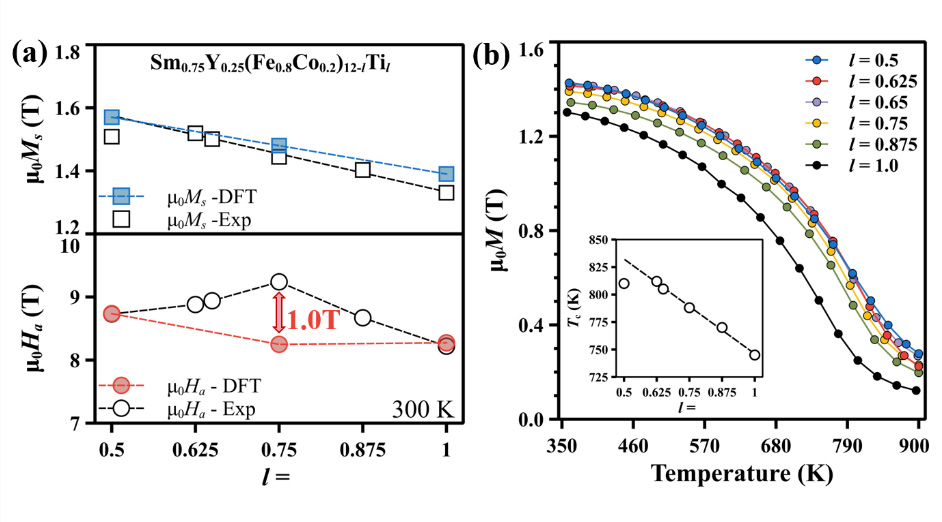
ZHAO Lizhong's group of Hangzhou Dianzi University, user of the Steady-state High Magnetic Field Experimental Facility (SHMFF), Hefei Institutes of Physical Science of the Chinese Academy of Sciences, has recently investigated the intrinsic magnetic properties of ThMn12-type permanent magnets and confirmed the anisotropic field and saturation magnetization by using of Physical Property Measurement System in SHMFF.
Related research results were published in Advanced Materials.
The development of high-performance permanent magnets is critical for the efficiency and reliability of electric vehicles, wind power generation, industrial robots, and other emerging industries. ThMn12-type SmFe12-based permanent magnets have been recognized as promising potential candidate because of their intrinsically high-temperature stability of magnetic properties. However, because of the metastable characteristics, it remains a challenge to achieve the single phase structure of SmFe12 system in bulk magnets.
The recent breakthrough evidenced that yttrium (Y) substitutions could not only stabilize the ThMn12-type structure, but suppressed the participation of the α-Fe phase. The optimized (Sm1-xYx)(Fe1-yCoy)12-zTiz alloy exhibits desirable magnetic properties, but it results in a rapid decrease for the anisotropy field and the coercivity due to the low anisotropy field of YFe12 phase.
To solve these problems, ZHAO Lizhong's group constructed a core-shell structure (Sm-rich shell and Y-rich core) via a spontaneous spinodal decomposition process, and realized the simultaneous enhancement of both phase stability and intrinsic magnetic properties.
The researchers demonstrated, by optimizing cooperatively and constructing the core-shell structure, that they obtained the high magnetic performance (μ0Ha=9.24 T, μ0Ms=1.52 T). Such an enhancement was ascribed to the pinning process of domain walls by the magnetic hardening samarium (Sm)-rich shell, which is directly observed by in-situ Lorentz transmission electron microscopy and reconstructed by micromagnetic simulation.
Moreover, the phase stability and saturation magnetization were simultaneously increased, which was attributed to the synergistic effect of Y, Co (cobalt), and Ti (titanium) substitutions.
Aside from that, the high μ0Ms value of 1.52 T (Tesla) was comparable to the reported (Sm, Zr) Fe12-based bulk alloys that contained a larger amount of soft α-Fe phases, indicating that the core-shell structure was more promising toward bulk magnets.
This study provides a significant concept for the development of advanced permanent magnets and also has implications for understanding the structural origin of intrinsic magnetic configurations.

(a). The compared experimental and DFT values of μ0Ms, μ0Ha; (b). M-T curves for the Sm0.75Y0.25(Fe0.8Co0.2)12-lTil(l = 0.5-1.0) alloys. The insert in (b) is the Ti content-dependent Curie temperatures. (Image by ZHAO Lizhong)

86-10-68597521 (day)
86-10-68597289 (night)

52 Sanlihe Rd., Xicheng District,
Beijing, China (100864)

